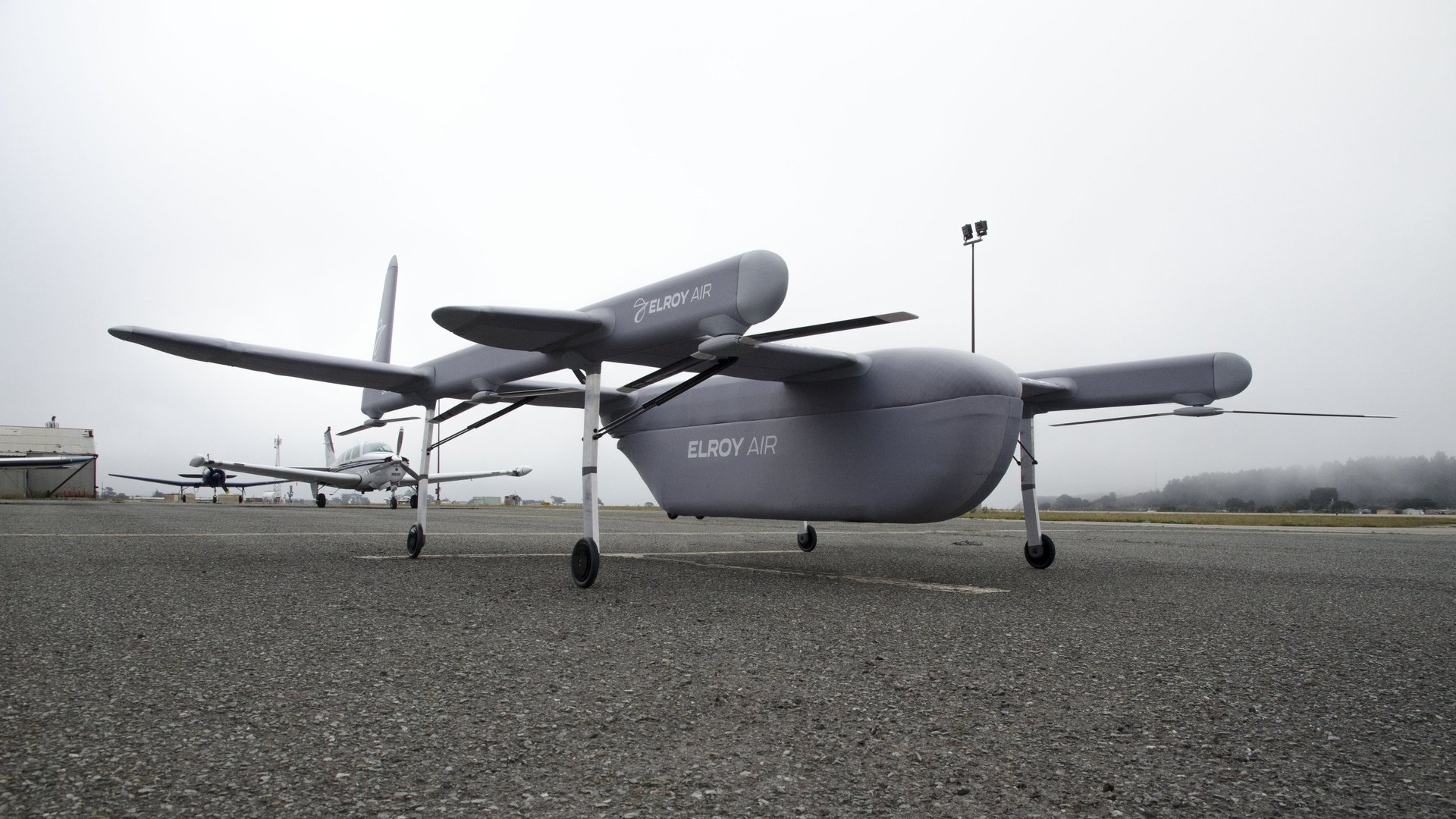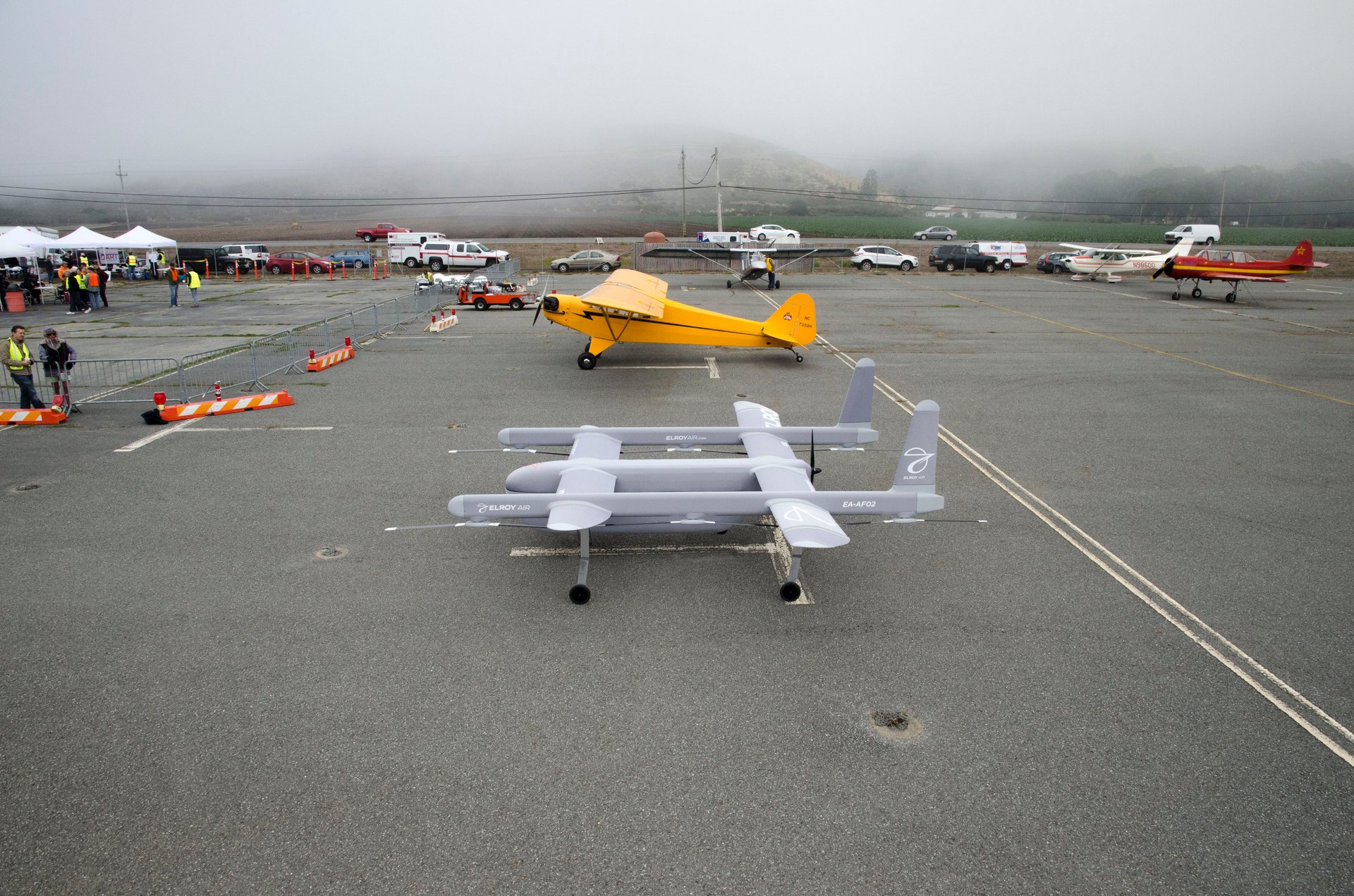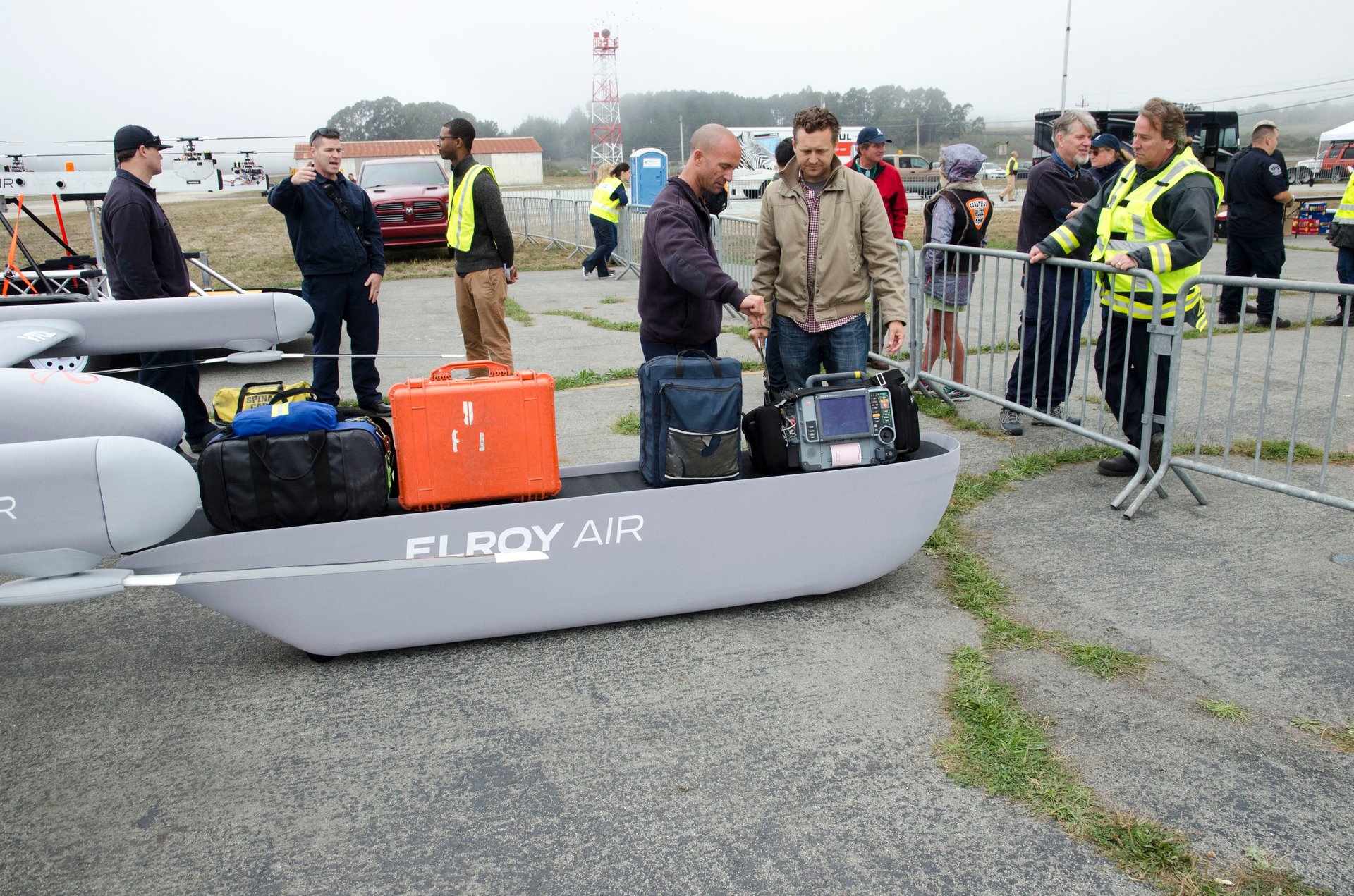Massive robot-powered drones may solve everything wrong with package delivery
It won’t be much help for this year’s holiday orders, but we may soon be getting our packages delivered to us a lot quicker.


It won’t be much help for this year’s holiday orders, but we may soon be getting our packages delivered to us a lot quicker.
San Francisco-based startup Elroy Air announced Dec. 22 that it’s secured $4.6 million in seed funding to build large, autonomous drones, capable of carrying loads of 150 pounds up to 300 miles in one trip. The funding round was led by Levitate Capital, Homebrew, Shasta Ventures, and Lemnos.
Elroy’s plan for drone delivery differs from what most are trying to accomplish with drones. Companies like Amazon, UPS, Flirtey, Zipline, and Flytrex—all of which have shown off working prototypes—are using relatively small drones, usually multi-rotor devices, to deliver small payloads short distances. Amazon wants to be able to offer its Prime members delivery of small items in under 30 minutes.
That’s generally great if you live in a sparsely populated area with big backyards for drones to land, where the chance of a drone accidentally dropping on someone, or being knocked out of the sky, is quite low. But in cities, densely populated and full of large buildings and other flying objects, delivering packages by vehicle still makes the most sense.
Elroy is named after “the coolest” member of the Jetsons family, the cartoon set in a future “where transportation gets so efficient,” as co-founder David Merrill told Quartz. The system comprises a few parts, which Merrill said the company is working on in tandem to develop.
First, there’s the drone itself, roughly the size of a small single-engine airplane. The full-scale prototype is called the “Aluminum Falcon” (Elroy seems to have a fondness for science-fiction and skirting copyright infringement). The final drone will be able to fly about 100 mph, and will use a combination of Lidar, radar, cameras, and air-traffic management software to sense the world around it and ensure it’s flying safely. It’s a vertical take-off and landing (VTOL) aircraft, which uses propellors to take off and move forward, aided by a set of wings, and has a hybrid engine, as batteries are too heavy to be able to carry a vehicle like this as efficiently as a gas engine can.

The cargo pod will have a payload capacity of about 150 pounds. Merrill says it could theoretically carry more, just for a shorter period of time. The pod itself will also be a robot, capable of maneuvering under and connecting to the drone; the system won’t need much in the way of human assistance to get into the air. Once it’s full of packages, the drone will be able to get itself ready and take off on its own, and, if it’s flying a short enough distance that it doesn’t need to refuel, it can fly home on its own as well.
The company is working on a smaller-scale version of each part of its system that is “aerodynamically similar” to the final design to nail down the logistics. ”It’s a really big project, literally and figuratively,” Merrill said. “In aviation, the design process is like a game of Whac-A-Mole.” Merrill said the company hopes to have a full-scale working prototype by the middle of 2018.
Elroy wants to be the company to deliver goods middle distances. Instead of trying to navigate the tricky maze of cities, or trying to compete with semi-trucks for long-haul shipping, Elroy’s drones will be best for shorter shipping routes. It’ll also be useful for trips between distribution centers.

Today in the US, if someone in New York orders something from California, it’s collected, put on a plane to New York, and trucked out to a distribution center where it can be sorted and put on a small local truck for the final delivery. But as anyone who’s sat watching their delivery tracker knows, it’s often between the airport and the distribution center that the package seems to get held up, because airport traffic is generally awful.
Somehow a package can make it 3,000 miles in a matter of hours, and then get stuck for days trying to get about 10 miles: Elroy’s system could circumvent this, delivering dozens of packages between an airport and a distribution center as needed, as there’s far less traffic in the sky. It could also be useful for delivering goods to more remote areas, like islands, or places with seasonal roads.
Once the technical hurdles of the system have been overcome, Elroy will still need to deal with the uncertain regulatory climate in the US. The Federal Aviation Administration (FAA) is in the process of figuring out how to integrate autonomous drones flying beyond the line of sight of a pilot into the national airspace. That could take years to solve. What Elroy wants to do, given its drones are far larger than those of most other companies, also doesn’t really fit into the FAA’s existing frame of reference.
It’s a difficult task ahead of the small startup, whose founders have already struggled in the drone industry. Merrill and some of his teammates previously worked at 3D Robotics, the drone hardware startup that couldn’t compete against Chinese manufacturers like DJI that could work more quickly and cheaply to innovate in the consumer market. (3DR has since pivoted into drone software.) But being able to replace trucks on inefficient shipping routes would be a boon to shipping companies constantly under pressure to deliver more packages more quickly.